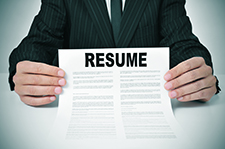 True or false? Communication for your job ends when the clock strikes 5 p.m. and you sprint out the door to head home.
True or false? Communication for your job ends when the clock strikes 5 p.m. and you sprint out the door to head home.
False. Even though you may have set great boundaries for your work/life balance, the innovation of technology has made us virtually on call 24/7. This means you are likely to check your email before bed or answer that text message at home from your boss before going to your son’s baseball game.
Communication is one of the most important soft skills companies look for when they are hiring. It’s so important that according to a survey done on behalf of RingCentral, 97% of people believe communication impacts tasks daily. A whopping 85% rely on more than one device for a majority of work, so not only do you have to worry about in-person communication; you also have the added stress of misinterpreted electronic communication.
The good news is that we’ve honed in on three important communications skills for success in the workplace and how to master them:
Listening
One of the most important communication skills is listening. It helps to be well spoken, but you also need to pay attention to what your colleague or boss is trying to convey. To make sure you are clear on the point of the conversation, be an active listener.
To show that you are listening, look at the speaker directly and pay attention to their body language. Engage in the conversation by nodding occasionally and smiling. Paraphrase what the person is saying by using phrases such as, “What I’m hearing is” and “Sounds like you are saying.”
And remember, don’t be afraid to ask for clarification.
Clarity
When speaking or emailing your boss, colleagues, or clients, be direct. If you beat around the bush with your point, you’re likely to confuse others. This applies to meetings, too. Public speaking can be intimidating. It’s a good idea to write down exactly what you want to say in bullet-point form so your notes are easily readable and you can refer to them if needed.
Follow the same process when giving instructions for tasks that need to be carried out, and encourage questions for clarity.
Empathy
Disagreeing with someone can be one of the most effective ways to shut down communication. But instead of seething over why your colleague can’t see your point of view, try putting yourself in their shoes.
The workplace is about teamwork, so it’s important to be open to others’ thoughts and ideas, possibly encouraging the same consideration for your differing opinion, if and when the time arises.
Other Important Communication Skills
While listening, clarity, and empathy are three vital communication skills, there are a few more skills that just may push your career to the top and set you apart from your colleagues when it’s time for that promotion.
Digital Etiquette
Communication through emails and text messages is rife for misinterpretation. Innocent words can suddenly take on a harsh tone without the context of body language and voice cues.
To help avoid communication mishaps, read your emails and text messages a few times to make sure the tone is professional and there are no spelling or grammar errors. Never respond to electronic communication when you are upset. It can come across as unprofessional and come back to haunt you.
If your message is time sensitive, set up a follow-up meeting to ensure the person received your message as it was intended.
Self-Improvement
Many people aren’t naturally gifted speakers, so it takes practice to improve both written and verbal communication in the workplace. Make sure to practice listening, clarity, empathy, and digital etiquette and you’ll soon become a much more valuable team member.
Do you have other suggestions for must master communication skills? Share them with us in the comments section below!
Movin’ On Up is brought to you by Express Employment Professionals.






